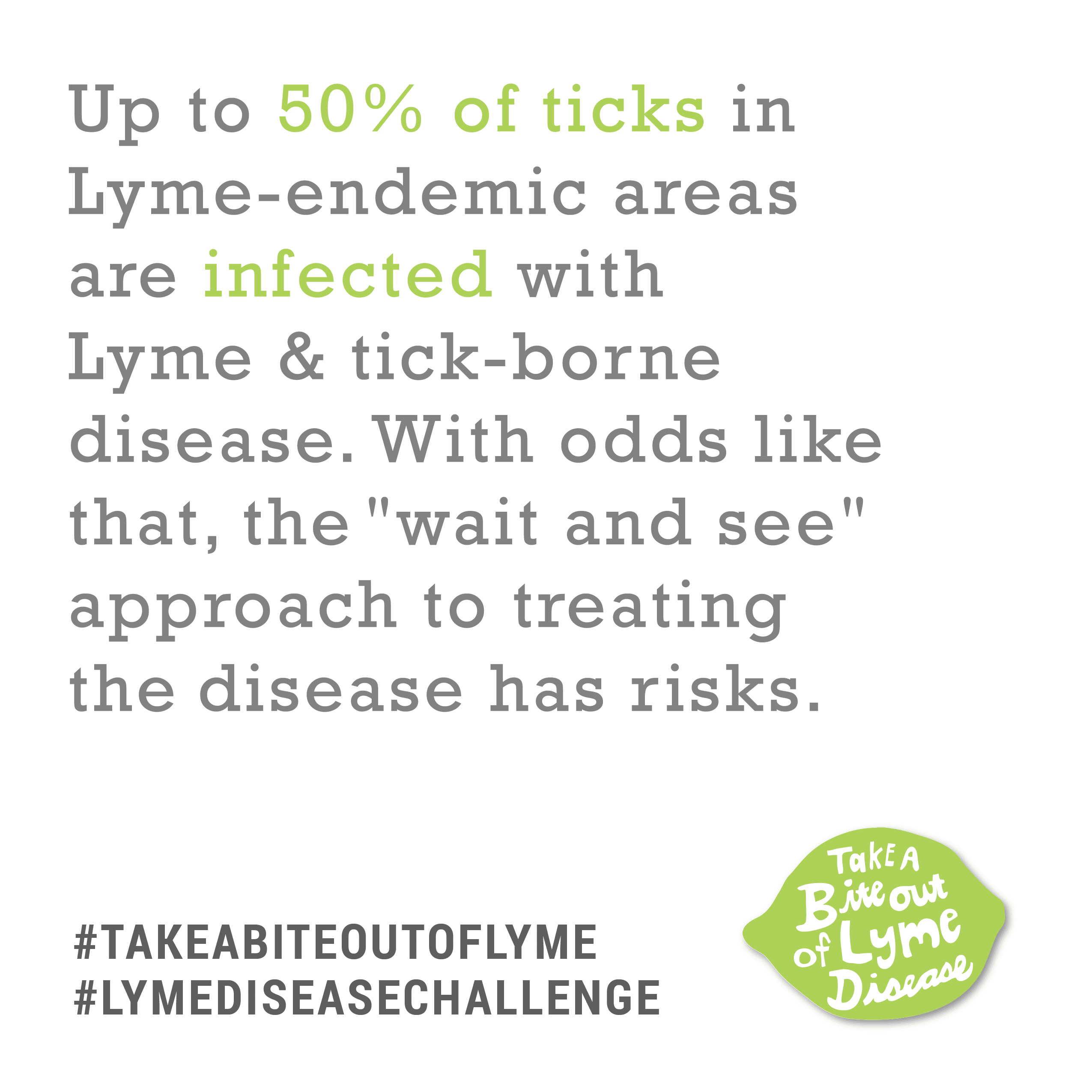Why Is Lyme Disease Spreading So Fast
One of the contributing factors to increases in Lyme disease incidence would be changes in the weather, and thus in the tick population, and in the numbers of people spending time outside, and in how much clothing they were wearing to protect their skin.
The sheep tick is the most common tick in the UK. One theory is that, due to climate change and warmer weather, tick reproductive activity appears to be increasing, and in particular benefitting from earlier, warmer springtime weather. Ticks climb up long grass and other plants and attach to passing mammals clearly humans with bare legs are more vulnerable than those in long trousers.
Another theory is that humans are simply building on more and more greenfield sites, which have traditionally been tick habitats, and are therefore coming into more frequent contact with the arachnids.
Another driving factor could be the presence of pets. The University of Bristol, UK, has an ongoing research project called the Big Tick Project which asked veterinarians across the UK to conduct spot check on dogs and cats brought into their consulting rooms and report the numbers of ticks they find. They found that 1 out of 3 dogs in the UK has a tick feeding from it in spot checks.
The de facto hosts of ticks are small, ground-dwelling mammals including mice, squirrels and also some birds. These animals spread widely and also come into close proximity with human dwellings and recreation areas.
How Common Is Lyme Disease
Lyme disease is more common in certain geographic locations, where ticks that carry the disease are found. In the United States, the most common areas for contracting Lyme disease are:
- Mid-Atlantic states, including Connecticut, Delaware, Maine, Maryland, Massachusetts, New Hampshire, New Jersey, New York, Pennsylvania, Rhode Island, and Washington, D.C.
Lyme disease incidence is increasing. In 1996, there were 16,455 confirmed cases in 2019, there were 23,453 confirmed cases along with 11,492 probable cases.
How Does This Compare With Other Diseases
Lyme disease is the most common of the vector-borne diseases in Europe. Vector-borne disease are infections spread by biting insects, arachnids and other parasitic animals.
Lyme disease is the fastest spreading vector-borne disease in Europe.
Zsuzsanna Jakab, WHO Regional Director for Europe said at a WHO conference in 2014:
There is a clear warning signal to the European Region that diseases carried by vectors may spread and intensify in the years ahead. This is not the time to lower our guard.
Whilst the incidence of Malaria is now falling sharply in Europe, Lyme disease is persistently increasing. As this graph produced by the WHO shows, Lyme disease is spreading far faster than other vector-borne illnesses in Europe:
Key: Vector-borne diseases in this graph are Lyme disease , Malaria , West Nile Fever , Tick-Borne Encephalitis , Crimean-Congo Haemorrhagic Fever and Leishmaniasis .
Lyme disease is also spreading faster than some other worrying diseases in Europe. This graph shows the increase in new cases of HIV-AIDS, Measles and Lyme disease throughout Europe from 1991 to 2010
Also Check: First Signs Of Lyme Disease In Dogs
Ten Facts About Lyme Disease
What Is Lyme Disease

Lyme disease is an infection caused by the bacteria Borrelia burgdorferi. This spiral shaped bacterium is most commonly spread by a tick bite. The disease takes its name from Lyme, Connecticut. This is where the illness was first identified in the United States in 1975.
Although Lyme disease is a year-round problem, April through October is considered tick season. Cases of Lyme disease have been reported in nearly all states in the U.S. and in large areas in Europe and Asia, but the most common areas are the Northeast, upper Midwest and northwestern states.
You May Like: Lyme Ab Western Blot Reflex
What Are The Mortality Charges For Lyme Illness
Most individuals totally recuperate from Lyme illness with antibiotic treatment. Nevertheless, many individuals not recognized and handled early could develop problems, a few of which may very well be life-threatening. Late Lyme illness could consequence within the following:
- Nervous system problems
- Coronary heart rhythm irregularities
- Issues with reminiscence, sleep, fatigue, and complications
Surveillance information between 1985 and 2019 discovered 11 circumstances of deadly Lyme carditis worldwide. A assessment of demise certificates between 1999 and 2003 listed Lyme illness as a uncommon reason behind demise.
Throughout the assessment interval, 96,068 circumstances of Lyme had been reported to the Facilities for Illness Management and Prevention . In contrast, in the USA, solely 23 demise certificates listed Lyme illness as an underlying reason behind demise.
Borrelia Burgdorferi Infectious Cycle
The infectious cycle of B burgdorferi involves colonization, infection of Ixodes ticks, and then transmission to broad a range of mammalian hosts, including humans. Variation in environmental and host conditions promotes different gene expression and changes in the composition of the membrane proteins of the spirochete. This adaptation is a critical step in the pathogenesis and transmission of Lyme disease.
The Ixodes tick progresses through four stages of development: egg, larva, nymph, and adult . Only larvae, nymphs, and adult female ticks require blood meals, and only ticks in the nymphal and adult stages can transmit B burgdorferi.
The life cycle of Ixodes ticks spans 2 years . The adult lays eggs in the spring, and the larvae emerge in the summer. The larvae feed once, in late summer, on any of a wide variety of small animals . The following spring, the larvae emerge as nymphs. Nymphs feed once, in the spring and summer. The white-footed mouse is the preferred feeding source of nymphs, but other animals apparently suffice. Nymphs molt into adults the following fall and feed once on a larger animal, with the white-tailed deer being the preferred host.
Ticks carry B burgdorferi organisms in their midgut. The bacteria are introduced into the skin by a bite from an infected tick, and disease is transmitted to humans as the spirochete is translocated from the gut to the salivary glands and then to the person at the site of the bite.
Read Also: First Symptoms Of Lyme Disease
Cases Of Lyme Disease Have Increased By More Than 80% From 2004 To 2016
As for the Lyme disease infection rate, its pretty evident that the situation is getting progressively worse by the year.
The number of new cases in 2004 was 19,804, whereas the number of new cases in 2016 reached 36,429.
Its also worth mentioning that there are still plenty of unreported cases out there, meaning the numbers are even higher.
How Many People Get Lyme Disease
There is no way of knowing exactly how many people get Lyme disease. A recently released estimate based on insurance records suggests that each year approximately 476,000 Americans are diagnosed and treated for Lyme disease.1,2 This number is likely an over-estimate of actual infections because patients are sometimes treated presumptively in medical practice. Regardless, this number indicates a large burden on the health care system and the need for more effective prevention measures.
Q: CDC previously estimated that ~300,000 people get Lyme disease each year.3,4 Why is this new number different?
Both estimates are based in part on insurance claims data, however the 476,000 estimate uses more recent information covering the years 2010-2018. In addition, there are some differences in the detailed methods used to develop the two estimates. Its important to emphasize that 476,000 is the estimated number of people treated for Lyme disease and likely includes some patients who were not actually infected.
Q: CDC also states that approximately 35,000 cases of Lyme disease are reported each year. Why is this number so different?
Q: How often does CDC plan to estimate how many people get Lyme disease?
As additional robust sources of data become available, CDC will use them to better understand how Lyme disease affects the American public.
Also Check: Does Lyme Disease Come Back
Early Detection And Prevention
If you know a tick has bitten you or you have symptoms that indicate Lyme disease, diagnosis and treatment are essential. The sooner you receive treatment, the better your chances of a full recovery.
If you are experiencing symptoms, there is a two-step blood test to check for Lyme disease antibodies: An enzyme-linked immunoassay test, followed by a Western blot test.
However, it can take weeks for antibodies to develop and be detected by blood tests. Therefore, your initial test may be negative if you were recently infected. Since antibodies remain for months or even years, a blood test can not determine whether treatment is effective.
There are some ways to prevent tick bites, which include:
- Knowing where ticks live
- Washing clothes in hot water after hiking or being outdoors
- Checking gear and pets
- Showering within two hours after you’ve been outdoors
- Checking for ticks
- Monitoring for any symptoms
How Is Lyme Disease Spread
Lyme disease is spread by the bite of an infected black-legged tick. The tick usually must be attached to a person for at least 24 hours before it can spread the germ. Black-legged ticks in Massachusetts can also carry the germs that cause babesiosis and human granulocytic anaplasmosis). These ticks are capable of spreading more than one type of germ in a single bite.
You May Like: Hotels Near Old Lyme Ct
Over A Million Patients Struggling With Persistent Lyme Disease
Research has shown that up to 34% of Lyme patients have symptoms post-treatment. Many clinicians and scientists believe that the persistence of bacteria is the cause of these lingering symptoms, so, while the CDC calls this post-treatment Lyme disease syndrome, many experts believe it is more accurate to use the term persistent Lyme disease. These studies demonstrate the existence of persistent infection, giving validity to this term.
How Widespread Is Lyme Illness

Lyme illness is extra frequent in sure geographic areas, the place ticks that carry the illness are discovered. In the USA, the commonest areas for contracting Lyme illness are:
- Mid-Atlantic states, together with Connecticut, Delaware, Maine, Maryland, Massachusetts, New Hampshire, New Jersey, New York, Pennsylvania, Rhode Island, and Washington, D.C.
Lyme illness incidence is growing. In 1996, there have been 16,455 confirmed circumstances in 2019, there have been 23,453 confirmed circumstances together with 11,492 possible circumstances.
Also Check: What To Do For Lyme Disease In Dogs
Can Lyme Disease Be Prevented
People aren’t able to become immune to Lyme disease. So even if you’ve had Lyme disease, you can get it again. No vaccine is available currently to prevent the disease.
The FDA approved a Lyme vaccine called LYMErix in 1998. The vaccine was not 100% effective, however. The FDA still recommended preventing the disease in other ways. In 2002, the company that made LYMErix said it would no longer offer the vaccine.
To help prevent Lyme disease, follow these guidelines.
Interesting Facts About Lyme Disease
Of all the tick-borne diseases, Lyme disease seems to be the one people talk about the most.
Even though this disease can sometimes lead to fatal consequences, it is easily treatable in most cases.
If you wish to know how long it takes to die from Lyme disease or how long the treatment lasts, take a look below!
Recommended Reading: Whats Lyme Disease In Humans
What Are The Complications Of Lyme Disease
Lyme disease affects people differently. Relapse and incomplete treatment responses happen. Relapse and incomplete treatment responses happen. Complications of untreated early-stage disease include:
-
Frequent hospitalizations to manage the disease
Some of these complications result in chronic, debilitating conditions.
Some people may develop post-Lyme disease syndrome . A condition also known as chronic Lyme disease includes PLDS, but also other syndromes. Usually, these are characterized by persistent musculoskeletal and peripheral nerve pain, fatigue, and memory impairment.
How Is Lyme Disease Treated
Your healthcare provider will figure out the best treatment for you based on:
-
How old you are
Lyme disease in the earliest stage is usually treated with antibiotics for 2 to 3 weeks.
Treatment will also be considered based on these and other factors:
-
If you are bitten by a tick that tests positive for the bacteria that causes Lyme disease
-
If you are bitten by a tick and have any of the symptoms
-
If you are bitten by a tick and are pregnant
-
If you are bitten by a tick and live in a high-risk area
You May Like: What Doctor Specializes In Lyme Disease
Rapidly Increasing Across Europe
Lyme disease is the fastest spreading, and the most common, vector borne disease in Europe, according to the World Health Organisation. .
Lyme disease has been increasing in Europe at 14% a year for the last 20 years, faster than AIDS, Malaria and Measles
In Europe, aggregated national figures for the whole region are published by the World Health Organisation and the European Centre for Disease Control. Published on the CISID website, they record that newly diagnosed cases of Lyme disease were around 2,400 in 1990 and had risen to 35,000 by 2010.
Link: WHO/ECDC/CISID website
Over this 20-year time period, new cases of Lyme disease in Europe increased by about 1,300%, which equates to an annual average growth of 65% each year relative to the number of patients in 1990. In reality, as the graph shows, the increase was more than this in some years and less in others.
The compound annual growth rate over this time period, showing the year-on-year growth, was 14%. This figure is the median year-on-year increase over the two decade time period, but in reality growth accelerated at a higher rate than this between 1997 and 2006, and then levelled off between 2006 and 2010. Frustratingly, the WHO/ECDC has not published more recent aggregated figures.
A research paper aiming to adjust the figures and arrive at a more representative estimate was published by The Journal of Public Health in 2016, and concluded:
Link to Source: Journal of Public Health
Early Signs And Symptoms
You May Like: Best Lyme Disease Doctors In Usa
How To Protect Yourself From Ticks This Summer
But Lyme disease has grown more prevalent with time: Around 8 percent of people studied from 2001 to 2010 had Lyme disease antibodies, according to the new study. From 2011 to 2021, the share was 12 percent.
In the U.S., confirmed cases of Lyme disease rose 44 percent from 1999 to 2019, according to the Centers for Disease Control and Prevention.
The new analysis offers a few explanations for the trend. Deer ticks, which spread Lyme disease to humans, prefer warm, humid climates. Rising global temperatures have resulted in longer summers and shorter winters, which consequently are enabling ticks to become more abundant and widespread. Humans are also encroaching upon forested areas, where ticks generally live.
A third reason, Krause said, is that deer populations have expanded, giving ticks more opportunities to feed and reproduce.
“Wherever deer are, the number of ticks explodes,” he said.
White Patients Make Up 897% Of People Infected With Lyme Disease In The Us

Lyme disease rates indicate that people of all ethnicities, races, and age groups can get infected with this disease.
However, the most significant part of the infected population was Caucasian when it comes to the US.
African Americans made merely 1.6%, Asian Islanders 1.5%, whereas Native Americans accounted for less than 1% of the infected population.
Don’t Miss: Primary Care Old Lyme Ct
Percent Of World Population May Have Had Lyme Disease Research Finds
More than 14 percent of the worlds population may have had Lyme disease, an analysis released on Monday revealed.
The research, published in BMJ Global Health, is the result of an examination of nearly 90 studies. It offers an unprecedentedly robust picture of how common the tick-borne illness may be.
“As far as Im aware, this is the first global seroprevalence work thats been done,” said Dr. Peter Krause, a senior research scientist at the Yale School of Public Health who was not involved in the new study. Seroprevalence refers to the measurement of antibodies in blood.
For the analysis, the researchers compiled studies that looked at how common antibodies to the bacteria Borrelia burgdorferi, which causes Lyme disease, are in humans. Of the more than 158,000 people involved in those studies, around 23,000 had the antibodies, suggesting they were either currently infected or had been in the past.
Lyme disease is the most common tick-borne illness in Europe and North America, but it’s not evenly distributed around the wold.
The new study showed that Central Europe had the highest share of residents with Lyme disease 21 percent compared to around 9 percent in North America. That’s similar to Krauses own research, which found that 11 percent of people sampled in New England in 2018 were positive for antibodies to Borrelia burgdorferi. Most U.S. cases of Lyme disease are in the Northeast and upper Midwest.